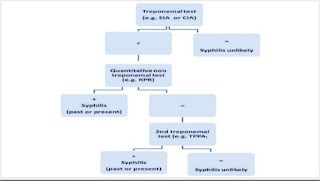Is It Just “Hydronephrosis”? Why We Needed a New Language in Pediatric Urinary Tract Dilation
Ever received a fetal scan report saying “mild pyelectasis,” and then the postnatal ultrasound called it “hydronephrosis”? Was it the same thing? Did it need follow-up? Antibiotics? A VCUG? Or was it just going to resolve on its own?
If you’ve been asking these questions in your rounds or reports—you’re not alone.
Let’s unravel the why, what, and how of the updated UTD Classification System for pediatric urinary tract dilation, and why it matters for us as residents in radiology and pediatrics alike.
🔍 Why was a new classification system needed?
Confusing Terminology: Terms like hydronephrosis, pyelectasis, pelviectasis, and pelvicaliectasis were being used interchangeably—but not consistently.
Disjointed Communication: Antenatal and postnatal reports often didn’t “speak the same language.” Pediatricians, nephrologists, urologists, and radiologists all interpreted the findings differently.
Missed or Overcalled Diagnoses: Some kids were over-investigated. Others were missed until symptoms developed.
Enter the UTD Classification System—a unified, multidisciplinary approach proposed in 2014 and detailed in the 2017 review by Chow et al., involving eight major pediatric and radiology societies.
🧠 What is the UTD System?
UTD = Urinary Tract Dilation. The new system:
- Uses 6 key ultrasound features.
- Categorizes antenatal findings into UTD A1 or UTD A2-3, and
- Postnatal findings into UTD P1, P2, or P3.
✅ Why we prefer UTD: It stratifies risk, reduces ambiguity, and guides clinical follow-up—all while encouraging a descriptive, standardized reporting approach.
🧬 Quick UTD Cheat Sheet
Antenatal
Normal
UTD A1: Mild pelvic dilation (4–7 mm pre-28 wks or 7–10 mm post-28 wks), no other features
UTD A2–3: >7 mm or >10 mm with other findings (e.g. peripheral calyces, abnormal parenchyma)
Postnatal
Normal: APRPD <10 mm, no calyceal/ureteral dilation
UTD P1: APRPD 10–15 mm or central calyces only
UTD P2: APRPD >15 mm or peripheral calyceal/ureteral dilation
UTD P3: Abnormal parenchymal thickness/echogenicity or bladder wall
📌 Case-Based Tip for Reporting
This is how your report Impression should look like-“UTD P2 based on 16 mm pelvic diameter, peripheral calyceal dilation and mild ureteral dilatation—consider UVJ obstruction or VUR. Recommend VCUG.”
💬 Final Thoughts
The UTD system isn’t just a grading tool—it’s a communication bridge. It brings clarity across specialties, enables structured follow-up, and empowers us as trainees to speak a common language. As we move from antenatal detection to postnatal decisions, understanding UTD is a must-have in our clinical toolkit.
Stay tuned for our upcoming infographic post breaking down APRPD measurement tips and central vs peripheral calyces on US!



Comments
Post a Comment